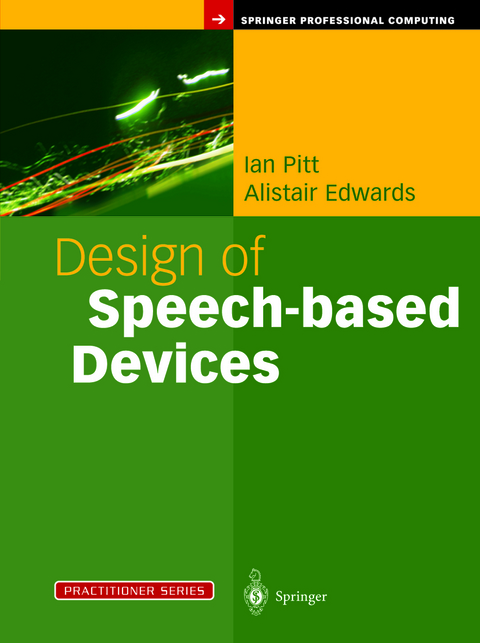
Design of Speech-based Devices
Springer London Ltd (Verlag)
978-1-4471-1089-7 (ISBN)
Developments in technology have made it possible for speech output to be used in place of the more usual visual interface in both domestic and commercial devices. Speech can be used in situations where visual attention is occupied, such as when driving a car, or where a task is complex and traditional visual interfaces are not effective, such as programming a video recorder. Speech can also be employed in specialist adaptations for visually impaired people.
However, the use of speech has not been universally successful, possibly because the speech interaction is poorly designed. Speech is fundamentally different from text, and a lot of the problems may arise due to simplified text-to-speech conversion. Design of Speech-based Devices considers the problems associated with speech interaction, and offers practical solutions.
1 Introduction.- 1.1 Evolution of Speech Synthesis.- 1.2 Text to Speech.- 1.3 Copy Synthesis.- 1.4 Applications.- 1.5 Applications for Blind People.- 1.6 Limitations of Current Design Methods.- 2 Background and Previous Research.- 2.1 Pausing and Rhythm.- 2.2 Intonation.- 2.3 New versus Given Information.- 2.4 Length of Utterance.- 2.5 Meaning: More than Semantics.- 2.6 Effects of Speech Quality.- 2.7 Summary and Conclusions.- 3 Interaction Design.- 3.1 Differences Between Visual and Auditory Interfaces.- 3.2 User Selection versus Designer direction.- 3.3 Determining Relevance.- 3.4 The Role of Expectation.- 3.5 Giving the Listener Control.- 3.6 Conclusions.- 4 Dialogue Design.- 4.1 Choosing Speech or Non-speech Presentation.- 4.2 Designing Non-speech Responses.- 4.3 Designing Speech Segments.- 4.4 Major and Minor Sentences.- 4.5 Example of Designing Utterances for an Interactive System.- 4.6 Choice of Phrasing.- 4.7.1 Avoiding Ambiguity.- 4.8 Personality.- 4.9 Presenting Numbers.- 4.10 Summary.- 5 Presenting Individual Speech Dialogues.- 5.1 Intonation Patterns in Spoken English.- 5.2 Statements.- 5.3 Questions.- 5.4 Directives.- 5.5 Summary.- 6 Presenting Lists and Menus.- 6.1 Problems Posed by Spoken Lists.- 6.2 Organizing Lists and Menus to Aid Memorization.- 6.3 List Size and Memorability.- 6.4 A Speech-based, List-searching Tool.- 6.5 Using Prosody to Convey Structure and Context.- 6.6 Using Priming Information.- 6.7 Providing Summaries and Overviews.- 6.8 Summary.- 7 Case Studies.- 7.1 Introduction.- 7.2 Evaluation of the Trafficmaster Freeway.- 7.3 The SpeakEasy NT Voicemail System.- 7.4 Design of a Speaking Video Recorder Interface.- 7.5 Conclusions.- 8 Future Trends.- 8.1 Introduction.- 8.2 Technology.- 8.3 Speech as an Alternative Channel of Communication.- 8.4 Applications for Users with Special Needs.- 8.5 Speech and Mobile Devices.- 8.6 Avatars.- 8.7 Unsolved Problems and Issues.- 8.8 Conclusions.- Appendix A: List of Homophones.- Appendix B: Words with More than One Meaning.- Appendix C: Words with More than One Pronunciation.- References.
| Reihe/Serie | Practitioner Series |
|---|---|
| Zusatzinfo | XI, 179 p. |
| Verlagsort | England |
| Sprache | englisch |
| Maße | 178 x 254 mm |
| Themenwelt | Mathematik / Informatik ► Informatik ► Betriebssysteme / Server |
| Informatik ► Software Entwicklung ► User Interfaces (HCI) | |
| Informatik ► Theorie / Studium ► Künstliche Intelligenz / Robotik | |
| ISBN-10 | 1-4471-1089-7 / 1447110897 |
| ISBN-13 | 978-1-4471-1089-7 / 9781447110897 |
| Zustand | Neuware |
| Haben Sie eine Frage zum Produkt? |
aus dem Bereich


